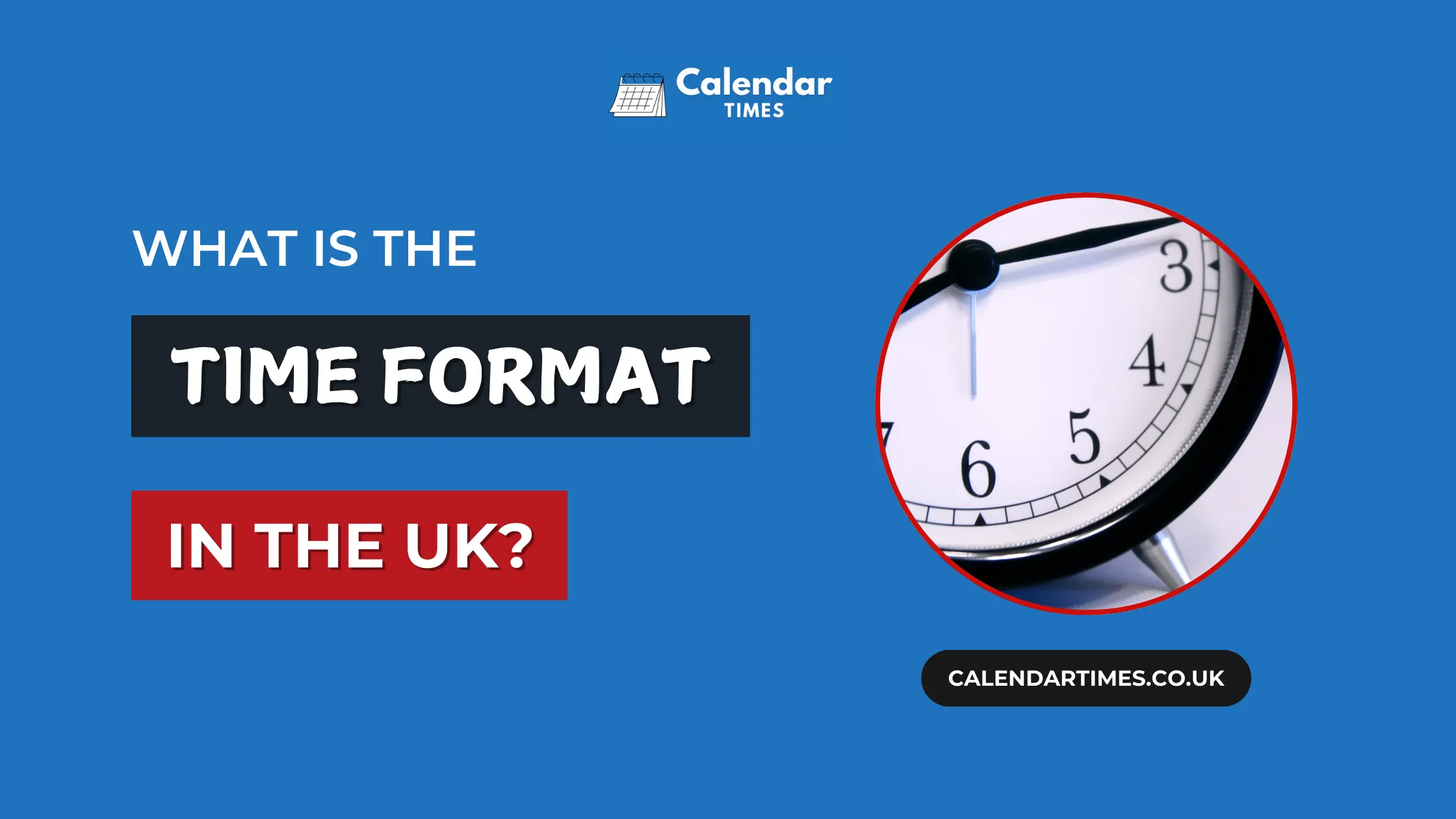Understanding the time format in the UK is needed for ideal planning and communication. At Calendar Times UK, we guide you through the time format in the United Kingdom, covering the UK Time Zone, UK Time Change, and how the British write time.
Whether you’re tracking UK bank holidays or organizing with a Calendar 2025 UK Printable, we’ve got you covered. Grab your planner today for effortless 2025 planning and stay on top of dates and times in the UK!
The Standard Time Format in the UK
The time format in the UK primarily follows two systems:
- 12-hour format
- 24-hour format
12-Hour Time Format
The 12-hour system divides the day into two cycles: AM (Ante Meridiem) for the morning hours and PM (Post Meridiem) for the afternoon and evening. This format is commonly used in informal communication, daily conversations, and media. For example, people often say “2:30 PM” when referencing the afternoon.
24-Hour Time Format
The 24-hour system, known as “military time,” eliminates the need for AM and PM. It is frequently used in official and professional contexts, such as transport schedules, medical records, and international communication. For example, “14:30” represents 2:30 PM in the 24-hour format.
Where Each Format is Used
- 12-Hour Format: Social events, casual conversations, and informal settings.
- 24-Hour Format: Train and bus schedules, healthcare, military operations, and digital systems.
Understanding AM and PM
The 12-hour time format in the UK relies on AM and PM to divide the day into two distinct periods, making it easier to interpret the date and time in the UK for informal and everyday use. Here’s a breakdown of what AM and PM mean and how they fit into the time format in the United Kingdom.
What Does AM and PM Mean?
- AM (Ante Meridiem): Latin for “before midday,” refers to the time from midnight (12:00 AM) to just before noon (11:59 AM).
- PM (Post Meridiem): Latin for “after midday,” covers the hours from noon (12:00 PM) to just before midnight (11:59 PM).
For example:
- 6:30 AM means 6:30 in the morning.
- 6:30 PM means 6:30 in the evening.
Why Does the UK Use AM and PM?
The British write time using AM and PM for the 12-hour clock because it’s convenient for casual communication. This system helps differentiate between morning and evening hours in everyday life, like scheduling social events or setting alarms.
When is the 24-hour Format Used Instead?
Although AM and PM dominate informal settings, the 24-hour time format in the UK is preferred for official purposes like train schedules, flight itineraries, and medical appointments. For instance, “18:00” is equivalent to 6:00 PM, avoiding confusion between morning and evening times.
Tips for Using AM and PM Correctly
- Always include “AM” or “PM” when using the 12-hour clock to avoid miscommunication.
- For professional contexts, adopt the 24-hour system to ensure clarity.
Time Zone in the UK
The UK Time Zone alternates between Greenwich Mean Time (GMT) in winter and British Summer Time (BST) in summer. GMT, the global standard for timekeeping, runs from late October to late March. During BST (March to October), clocks move forward by one hour (GMT+1) to extend daylight.
Key 2025 dates:
- BST begins: March 30, 2025
- GMT resumes: October 26, 2025
Writing Time in the UK
The time format in the UK uses both the 12-hour and 24-hour systems. In informal settings, the British write time using the 12-hour format with AM/PM (e.g., 2:30 PM). For official schedules, the 24-hour format is preferred (e.g., 14:30).
Key tips:
- Use AM/PM for clarity in casual communication.
- Adopt the 24-hour format for travel, healthcare, and professional contexts.
Why Is It Important to Know UK Time Formats?
The UK time system is important for accurate communication, travel, and planning. Being aware of how to read and write time helps you avoid confusion while using a calendar 2025 UK Printable, connecting your devices to the UK Time Zone, or planning around UK bank holidays.
Understanding the differences between the 12- and 24-hour schedules will help you be on time for meetings, activities, and travel.
FAQs
1. What is the standard time format in the UK?
In the UK, both the 12-hour and 24-hour formats are used. The 12-hour format is common for casual use, while the 24-hour format is standard for official schedules and international communication.
2. Why does the UK switch to British Summer Time (BST)?
The UK moves to BST in the summer months (March to October) to extend daylight in the evening, promoting energy savings and outdoor activities.
3. How do I convert from 12-hour to 24-hour time in the UK?
To convert from the 12-hour format (e.g., 2:30 PM) to the 24-hour format, add 12 hours to PM times (e.g., 2:30 PM becomes 14:30). AM times remain unchanged.
4. What is Greenwich Mean Time (GMT)?
GMT is the standard time zone for the UK during winter, from late October to late March. It serves as the global reference for timekeeping.
5. How can I stay updated on UK time changes?
Use a Calendar 2025 UK Printable or digital calendar to mark key dates for UK Time Change, ensuring you adjust your clocks for BST and GMT shifts.


